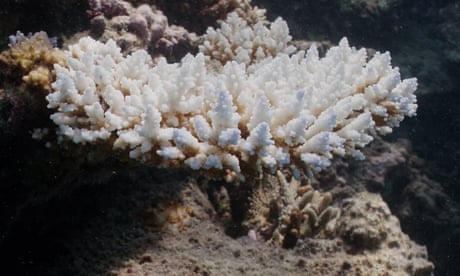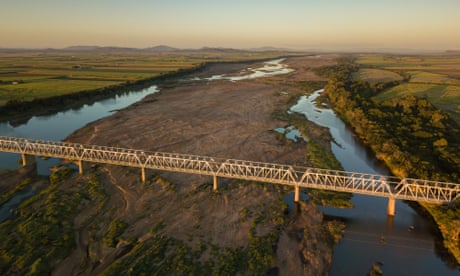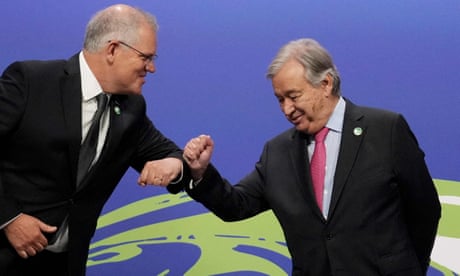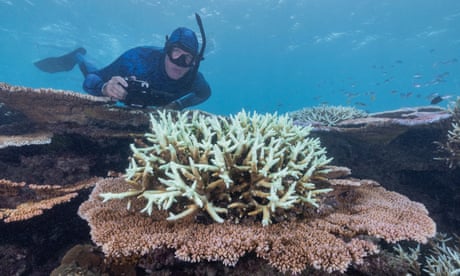Extract from The Guardian
Reduction in spending across clean energy agencies represents a 35% annual cut over four years.

Tue 29 Mar 2022 19.48 AEDT
Last modified on Tue 29 Mar 2022 20.25 AEDTArmed with scientific warnings about the need for all countries to rapidly scale up action to keep alive the chance of limiting global heating to 1.5C above pre-industrial levels, the Morrison government plans to cut climate spending if returned to power at the election.
The 2022-23 budget papers show it is expected to fall from $2bn next financial year to $1.9bn, $1.5bn and $1.3bn in the three years that follow. The fall represents a 35% annual cut over four years.
The figures are spelled out in a section of the papers added under the former prime minister Tony Abbott, who wanted people to be able to see how much total climate spending – which he opposed – was contributing to government debt.

It includes funding to the Clean Energy Finance Corporation (CEFC) and the Australian Renewable Energy Agency (Arena), the “direct action” emissions reduction fund, programs to develop a “clean” hydrogen industry and resilience programs to protect the Great Barrier Reef, which is currently suffering through its fourth mass bleaching event in six years.
The cut may in part be due to a recent decision by Angus Taylor, the energy and emissions reduction minister, to allow businesses to break contracts to sell carbon credits to the government under the emissions reduction fund so they can instead sell them on the more lucrative private, voluntary market. The budget papers say this will contribute to a $2bn improvement in the budget bottom line over the next four years. That additional cash has not been redirected into other climate programs.
The government says it is spending $22bn on low-emissions technology, but that commitment is over a period beyond the life of most governments – about a decade. Most, but not all, of that funding has been promised to top up funding for the CEFC and Arena, which were created a decade ago under a deal between Labor, the Greens and independents.

The Coalition initially tried to abolish them. More recently it has embraced them and tried to broaden their role to also fund gas power, “clean” hydrogen made with gas and carbon capture and storage, but been blocked in parliament.
It focuses on hydrogen and includes projects that will add to the greenhouse gas emissions in the atmosphere. There is $300m to support new liquefied natural gas and “clean” hydrogen production in Darwin, another $247m to help companies investing in low-emissions technologies including hydrogen and $50.3m for gas infrastructure.
The latter was announced by Taylor earlier this month as part of the Coalition’s promised “gas-fired recovery”. Oddly, given the government’s zeal for gas as an energy source, it did not rate a mention in Josh Frydenberg’s budget speech. He did mention another commitment that was consistent with the budget’s focus on regional Australia: $148.6m for community solar and wind microgrids in areas too remote to have access to the power grid.

On the natural environment, there was little beyond what had already been flagged. It included $1bn for the reef spread over nine years, mostly to help clean up agricultural run-off affecting water quality, and $804m for Antarctic research and strategic capability over a decade. They read like big sums, and the Antarctic funding has been applauded, but the reef money in particular is diluted by the extended timeframe – it is really just a continuation of existing funding and, experts say, a fraction of what is required. As the government acknowledges, the climate crisis remains the biggest threat facing the 2,300km reef system.

The government also announced $636.4m over six years to boost the number of indigenous rangers working on land and sea management by up to 1,089, though most of the funding was not due until after 2025.
Sussan Ley, the environment minister, pledged $60m for plastic recycling, a $100m extension of an existing community-focused environment restoration fund and $128.5m as part of its promise to change how the environmental impact of development proposals are assessed.
The latter, also announced earlier this month, includes a commitment to set up “bioregional plans” so projects in nominated areas do not need individual federal assessments.
Little detail has been released. It is possible it could help address a major flaw with the current system – its failure to factor in the cumulative impact of different projects that destroy habitat and affect threatened species and ecosystems. But conservation groups are concerned it could further water down Australia’s environment protection laws, which everyone agrees are failing.
A once-a-decade government review by the former competition watchdog Graeme Samuel last year found Australia was on a “trajectory of environmental decline”. The bottom line is there is nothing in this budget on the scale needed to start to address that.
No comments:
Post a Comment